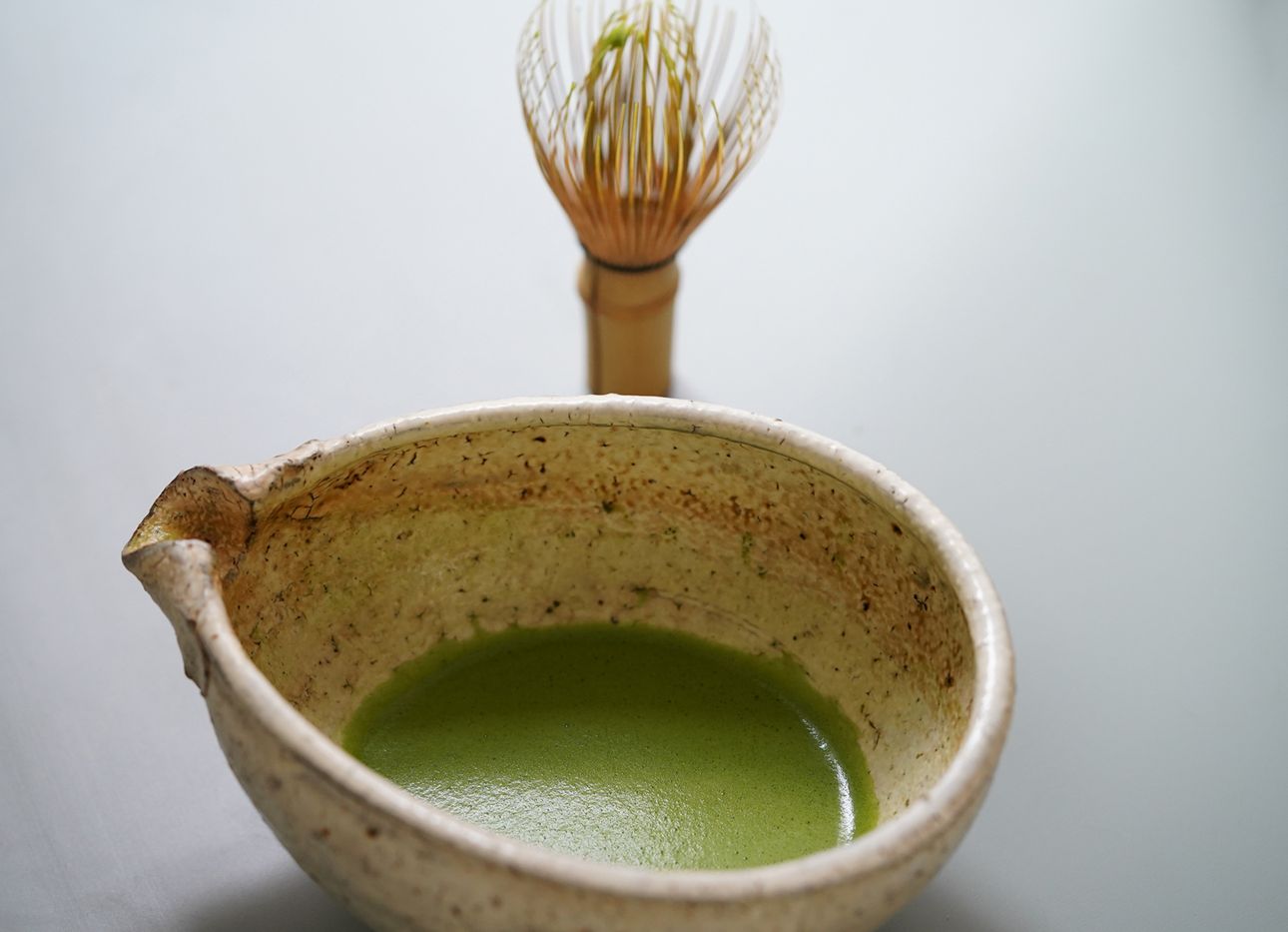
Kettl’s Zach Mangan on Identifying Top-Quality Matcha
Zach Mangan, founder of the specialty Japanese tea importer, gallery, and café Kettl, tells us what to look, smell, and taste for in a top-quality matcha.
“Our goal is always to educate the customer, because we want them to be able to discern for themselves and to [understand] their own tastes. We always begin by telling them, number one, you’re starting with the quality of the product. Specifically, with matcha (and this more or less applies to all tea), understanding where it’s manufactured and who manufactures it is key. It might be listed as being from Japan, or a region like Uji or Aichi. The more specificity of origin you can get from the product, the better—it’s showing you that the end seller knows where it came from. A lot of the time, what will happen is that the product will change hands so many times by the time it gets to you, that information isn’t clearly labeled. If you’re buying a package of matcha and there’s no origin or country noted, that’s usually a really bad sign.
The freshness of matcha is also a big thing. There should always be some date stamp explaining a “best-by” date on the bottom. The problem is that, these days, manufacturers are really extending that date out very far, but you shouldn’t buy anything with a date that’s more than six or seven months out.
As for the packaging, what we’re looking for is an airtight seal and an opaque bag. You do not want to see the matcha through the bag at all—so a glass jar, or any type of translucent bag that lets light in is hugely detrimental to the product. Because matcha is such a fine powder, factors like light, heat, moisture, and temperature are really important. If you’re buying a tin and the person selling the matcha to you keeps their tins in a refrigerator, that’s a very good sign.
Those are three key things that indicate the tea is going to be in great condition. Then, when you open the package, what you’re really looking for is an immediate fragrance—everything from notes of fresh grass, hazelnut, and kombu, which also come through in the flavor… It’s an inviting, and strong, earthy aroma. Fragrance is a great indicator that the molecules and the chemicals in the tea are still very fresh. Your reaction should be immediate and visceral, like, ‘Wow, there’s a lot going on.’ Finally, look for vibrancy, consistent texture, and bright green color. Color is a great indicator of quality and freshness.
You can buy great matcha for twenty dollars, and you can find some exceptional matcha for much more. In any case, you have to align your expectations with your price. Generally speaking, you’re going to hit the twenty- to thirty-dollar mark for a pretty good bag of matcha.”